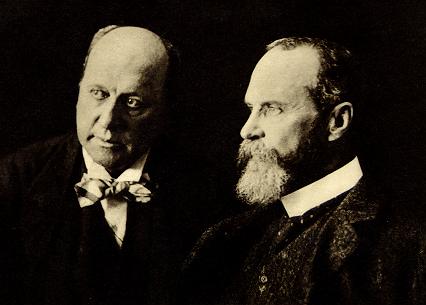"Study sheds light on mechanics behind “herding” in equity markets
A new academic study examines how equity betas jump with the release of earnings announcements. It seems that, as in the hedge fund industry, a dearth of information in equity markets can lead to an over-reaction when news is finally released - even if that news is about a competitor.
 It’s a widely-accepted axiom that “correlations go to one” in times of distress. In volatile periods like August 2007 and October 2008, hedge funds using seemingly disparate, unrelated strategies, tend to exhibit strikingly similar performance. This is often blamed on a “flight to liquidity” that can have a similar effect across different strategies. At its heart, such a run for the exits is usually precipitated by investors who extrapolate specific occurrences (e.g. a fund collapsing) across the entire industry. In fairness, this may be a good bet. After all, what affects one fund is bound to affect other funds operating with similar strategies.
It’s a widely-accepted axiom that “correlations go to one” in times of distress. In volatile periods like August 2007 and October 2008, hedge funds using seemingly disparate, unrelated strategies, tend to exhibit strikingly similar performance. This is often blamed on a “flight to liquidity” that can have a similar effect across different strategies. At its heart, such a run for the exits is usually precipitated by investors who extrapolate specific occurrences (e.g. a fund collapsing) across the entire industry. In fairness, this may be a good bet. After all, what affects one fund is bound to affect other funds operating with similar strategies.
A new study by academics at Oxford University and the London School of Economics shed some light on this phenomenon. Michael Patton and Michela Veradero find that individual stocks also experience an increase in correlation with their peers when they announce any news.
This makes intuitive sense. When a company announces news such as earnings, information-starved investors are likely to jump on that as an indication of industry conditions. As a result, the fortunes of competitors, suppliers and other industry participants respond accordingly.
They divide the beta of individual securities into its two components: relative volatility and covariance. While volatility relative to the market is bound to change when news is announced, they find that the lion’s share (80%) of any change in beta can be attributed to a pop in the covariance.
As the authors put it:
“The intuition behind the model is simple, and is based on three realistic assumptions of the news environment and the firm’s stock prices: Firstly, some portion of the earnings of a given firm reflects wider macroeconomic conditions. Secondly, investors use many sources of information to update their expectations about future earnings, not merely news from a single firm. Thirdly, firms only announce their earnings infrequently (e.g., quarterly). In such an environment, investors are able to update their expectations about a firm’s profitability quite accurately when the firm announces its earnings, while in between earnings announcement dates they update their expectations using other pieces of information available to them, such as the announcements of other firms. As an individual firm’s earnings figures contain some information on the wider macro-economy, good (bad) news for one firm represents partial good (bad) news for other firms, and investors update their expectations accordingly. Thus on an announcement date the covariance of the announcing firm’s return with other firm’s returns goes up (regardless of whether the earnings news is good or bad), which also increases its beta with the market portfolio.”
So investors glean precious information from the news surrounding other companies. As you might expect, the propensity to jump on any hard news - no matter where it comes from - is highest in industries where there is a shortage of valuation data points.
For example, the Patton and Veradero find that technology companies tend to exhibit a higher pop in beta around news events than pharmaceutical companies:
Since hedge funds don’t (generally) trade as securities, they have no “price” per se. As a result, the market is only able to place a value on a hedge fund with increased or decreased asset flows. When news regarding one particular hedge fund is announced, adjacent funds may be more likely to experience inflows or outflows. Granted, this is a much slower process. But, like price, quantity also reflects underlying demand.
In other words, while the “herd mentality” shows itself in higher (or lower) prices for securities, it reveals itself in the hedge fund world as higher (or lower) asset flows.
 Email This Post
Email This Post  Print This Post"
Print This Post" 







































No comments:
Post a Comment